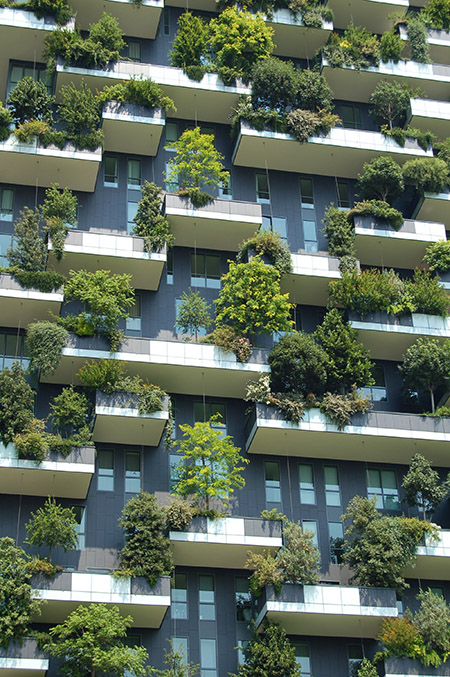The future of smart buildings
There is now a debate about the need to establish a personal carbon footprint, and a growing trend to respect the needs and responsibilities of the individuals who occupy and use buildings. The emergence of sensors embedded in clothing, materials and equipment, together with wireless networks, will lead to a ubiquitous network providing comprehensive and valuable performance data in real time. Data on how users react to the changing environment can be analysed to reveal important patterns that can be used to provide a personalised level of control.
This will become common practice in the coming years. Electronic devices, including personal accessories, are already well developed in the textile industry and will help people to be more aware of their actions, for example regarding energy and water consumption.
Domestic consumers can save money and, in the case of commercial buildings, green bonus schemes can be used by organisations to encourage their employees to be more aware of green measures. Furthermore, by comparing the performance of a building and its systems with the responses of occupants, it is easy to identify areas of dissatisfaction and see if more appropriate design criteria can be applied. Rapid advances in information and communication technologies, such as the hafnium chip, will increase the power of computers and the speed at which they operate. Cloud computing means that virtual data storage will not only reduce the burden on computers in terms of cooling, office space and management time, but will also allow smart mobile devices to access the Internet to retrieve the data they need. The networked world opens up a new way of understanding and modelling complex, non-linear dynamic systems for planning and management processes.

Sustainable and people-centred design Intelligent buildings
The development of virtual reality scenarios will enable greater customer involvement in planning and management processes and greater integration between different systems. The use of interconnected design tools will enable a more efficient and effective management process. When analysing problems in the built environment, it is often simplistically assumed that actions occur in a non-linear system, but in reality non-linear dynamic systems dominate. Network science is part of the field of complexity science and chaos theory. It allows us to study how systems interact and how emergent properties and behaviours arise (Hidalgo, 2008; Lu et al., 2010). These developments and ideas will allow more realistic modelling of systems in the future. Another very important area of development will be smart materials, which will radically change the way we design building facades and furnishing materials.
Nanotechnology is already having a major impact on how material properties can be influenced by allowing modification at the molecular level, with practical examples already emerging such as cement, which is lighter but many times stronger than conventional concrete. Glass should become as thermally efficient as other materials. Integrated nanotubes and possibly graphene can change the properties of materials. In contrast to this technologically advanced approach, industrial hemp is a renewable plant material that has a low energy content and high thermal mass, is hygroscopic and sufficiently airtight (hemp structures allow air to pass through).Animals and plants have much to teach us about the economic use of energy and materials. We quickly learn how bacteria can be used in different ways, for example to generate electricity from plants. The first artificial leaf was produced in 2011 and is a way of producing hydrogen by applying sunlight to certain catalysts immersed in water. We hope that biomimicry will provide insights from nature that can be applied to architecture. Structural forms used in construction have long mimicked the shapes of plants and trees, but there is still much to learn, and robotics offers a means of improving the maintenance and cleanliness of systems.